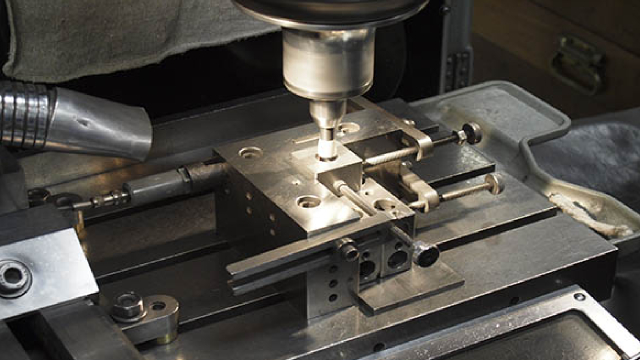Wall Street recently discovered through Securities and Exchange Commission filings that artificial intelligence (AI) chipmaker Nvidia (NVDA 2.63%) reshuffled its tech portfolio, selling out of last-mile delivery pioneer Serve Robotics (SERV -39.57%) and AI voice leader SoundHound AI (SOUN -28.10%).
As the preeminent force in AI hardware, Nvidia’s investment moves often signal broader market trends. Not surprisingly, both stocks tumbled on the news:

SERV data by YCharts
As a shareholder in both companies, Nvidia’s exit raises valid concerns. The chip giant’s unique position at the center of the AI revolution gives it unparalleled insight into emerging technologies and business models. However, I suspect this portfolio reshuffling has more to do with profit-taking after both stocks’ meteoric rise over the past quarter than any fundamental concerns. That same valuation caution led me to pause my buying recently.

Image source: Getty Images.
Here’s why I’m using this pullback to build larger positions in both companies, which are tackling two distinct but massive AI opportunities.
1. SoundHound AI: A massive commercial opportunity awaits
Founded in 2005, SoundHound AI has been at the forefront of voice AI technology, enabling natural conversations between humans and devices. Its platform powers interactions across a wide range of industries, from automotive and restaurants to financial services, demonstrating impressive versatility.
The stock’s 143% surge over the past 90 days suggests that Nvidia was capitalizing on recent gains, a move that, while raising concerns for some, signals a potential opportunity, in my view. Beneath the headline numbers, I see SoundHound’s true appeal in its position as an independent voice AI platform built on proprietary technology that enables seamless, natural interactions across multiple sectors.
The market opportunity appears significant. In 2024, SoundHound estimated its addressable market, centered around device royalties, subscription services, and advertising, to be a staggering $140 billion. Management projects revenues of $82 million to $85 million in 2024, growing to $155 million to $175 million in 2025. With cumulative subscriptions and bookings backlog exceeding $1 billion, these impressive financial metrics strongly support my bullish stance on this AI voice pioneer’s stock.
Early partnerships further underscore the company’s enormous potential. SoundHound AI has secured significant automotive deals with Stellantis, parent of major brands like Chrysler and Jeep. It has also made inroads into quick-service restaurants while establishing relationships across financial services, healthcare, and other sectors.
Of course, I remain mindful of the risks. As an early-stage company, SoundHound faces considerable operating losses, high R&D expenses, and rapid cash burn, all while competing against tech giants. Successful execution will be critical for scaling revenues and moving toward profitability.
I’m eagerly awaiting SoundHound AI’s fourth-quarter and full-year 2024 results on Feb. 27, which should shed more light on the company’s trajectory. Despite the concerns raised by Nvidia’s exit, I believe the current pullback offers an attractive entry point for a company poised to become a key independent player in the rapidly expanding voice AI market.
2. Serve Robotics: Transforming last-mile delivery
Founded inside Postmates, Serve Robotics has built autonomous robots to tackle delivery’s costly last-mile problem. The timing appears opportune, as major platforms like DoorDash struggle with rising costs that match or exceed their revenue growth.
While speculative, my take is the stock’s meteoric 174% surge over the past 90 days likely prompted Nvidia’s profit-taking. Looking past the price action though, I see compelling potential in the company’s market position and technology.
According to Ark’s “Big Ideas 2024” report and company estimates, the robotic and drone delivery space could reach $450 billion by 2030. Serve has proven its capability, with over 50,000 deliveries in Los Angeles at 99.94% reliability, far surpassing human drivers. Moreover, a recent game-changing deal with Uber Eats targets the ambitious deployment of 2,000 robots by the end of 2025, setting the stage for significant revenue growth in the years ahead.
Several additional factors support my investment thesis. First, Serve’s Gen3 robot demonstrates significant technological progress with its 11 mph top speed, 14-hour battery life, level 4 autonomy, and 50% cost reduction from previous models, giving the company a healthy technological moat.
Next, a handful of major strategic partnerships further strengthen the investment case in this robotics play. Turning to the specifics, Serve has contracted with Magna International to handle its manufacturing needs, and a deal with Wing Aviation is poised to significantly extend its delivery reach through robot-to-drone handoffs.
However, meaningful hurdles exist. Revenue generation is still in the early stages, and the company faces significant cash burn as it scales operations. Serve must flawlessly execute its ambitious expansion while controlling manufacturing costs amid competitive pressures.
Despite Nvidia’s exit and inherent risks, this pullback offers an attractive entry point into what could become a leader in autonomous urban delivery. I’m taking this opportunity to increase my position ahead of multiple potential catalysts in 2025.
Financial Market Newsflash
No financial news published today. Check back later.










